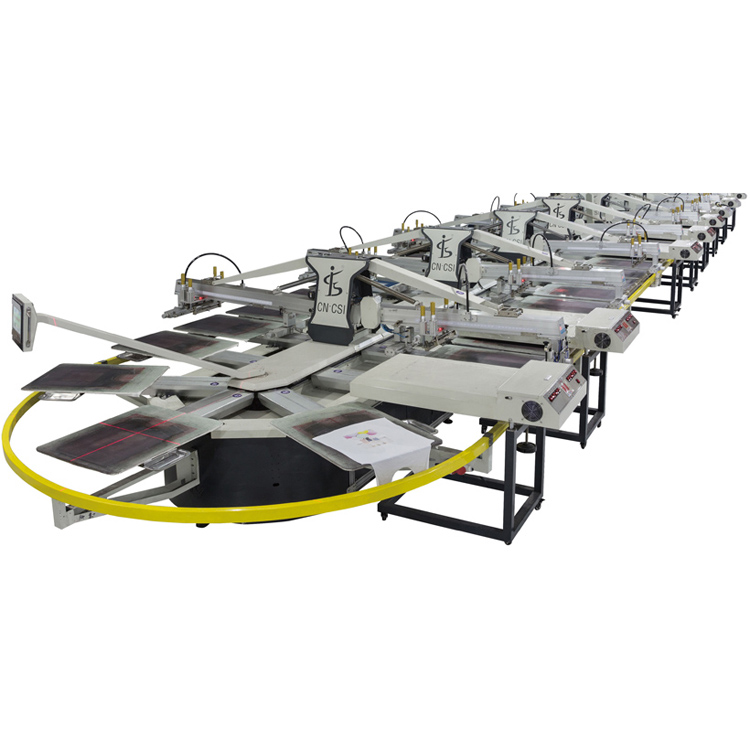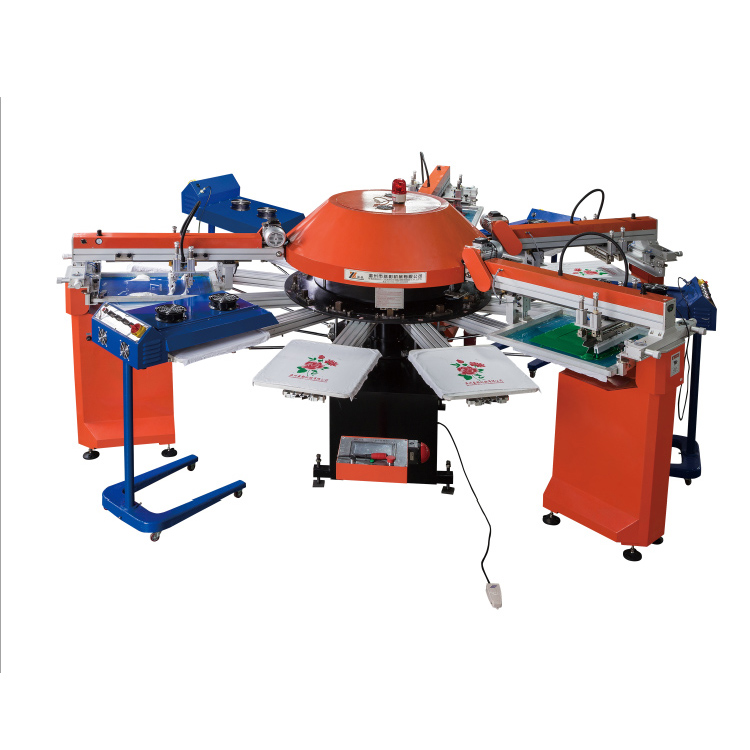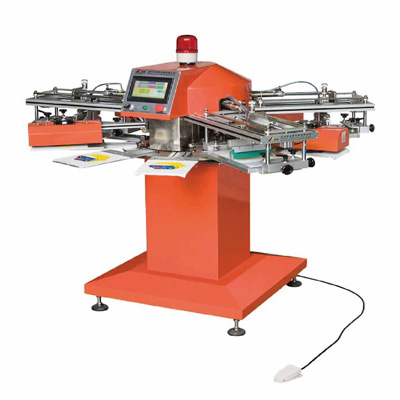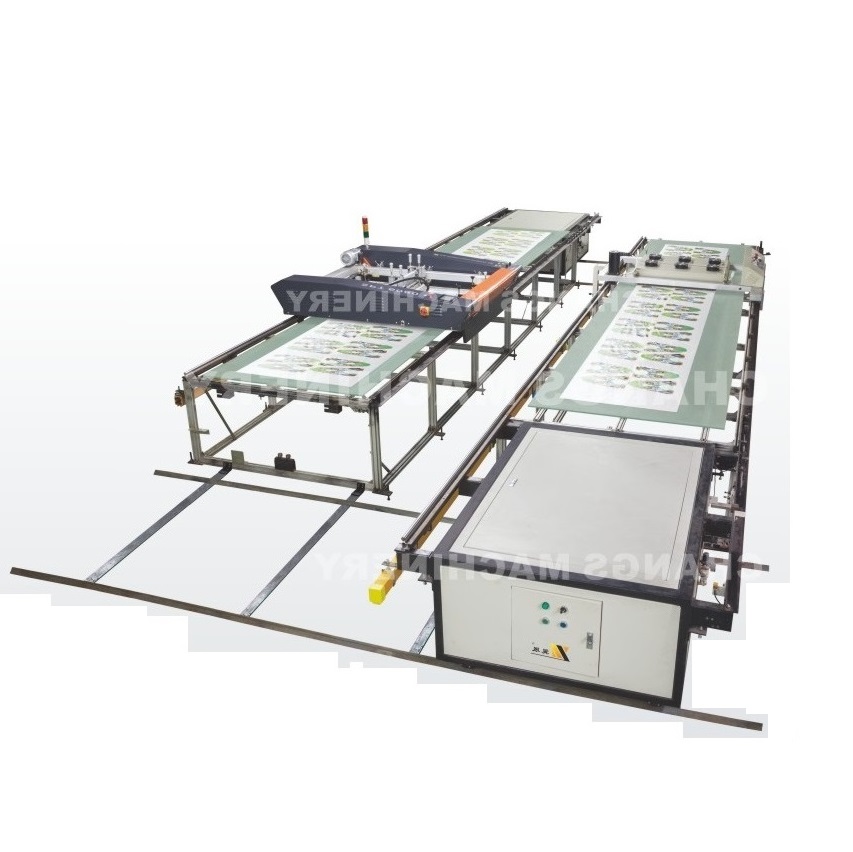In the competitive world of screen printing, staying ahead requires constant evaluation of your equipment and processes. If you're still relying on a manual screen printing press, it might be time to consider an upgrade to an automatic screen printing machine. Let's explore the key factors that indicate it's time for a change: labor costs, production limitations, consistency, and physical wear and tear, and also discover the benefits of an automatic screen printing machine.
1. Labor Costs
Manual screen printing relies heavily on skilled operators for every step—from aligning screens to flooding ink and pulling prints. This labor-intensive process not only demands more staff but also increases the risk of human error, reprints, and wasted materials.
Automatic screen printing machines streamline the process with programmable precision. One operator can manage multiple presses simultaneously, slashing labor costs and freeing up your team for higher-value tasks. The result? Faster turnaround times and a healthier bottom line.
2. Production Limitations
Manual presses excel for small batches or custom jobs, but they struggle to keep up with large orders. The physical effort required to print hundreds (or thousands) of shirts leads to fatigue, slower speeds, and missed deadlines.
Automatic machines are built for speed and scalability. With cycle times as fast as 1,000+ prints per hour and continuous operation capabilities, they transform your shop’s capacity. Whether you’re fulfilling bulk orders or diversifying into new markets, automation ensures you never turn down profitable opportunities.
3. Consistency
Even the most skilled printer can’t match the repeatability of a machine. Manual presses often suffer from uneven ink deposits, misaligned prints, or color variations—issues that lead to dissatisfied clients and costly waste.
Automatic screen printing machines use advanced registration systems and programmable settings to guarantee flawless consistency. Every print is identical, whether it’s the first or the thousandth. This reliability builds trust with clients and reduces material waste, protecting your margins.
4. Physical Wear and Tear
Manual printing is physically demanding. Repetitive motions strain operators’ wrists, shoulders, and backs, leading to higher absenteeism, turnover, and even long-term health issues.
Automation eliminates the grind. Operators oversee the process instead of performing it, reducing fatigue and injury risks. Plus, modern automatic machines are engineered for durability, with components designed to withstand high-volume workloads—meaning fewer breakdowns and maintenance headaches.
5. What is an Automatic Screen Printing Machine?
An automatic screen printing machine is a highly sophisticated piece of equipment that automates the screen printing process. It typically consists of a conveyor system to move the substrates through the printing stations, multiple screen printing heads for multi - color printing, and advanced controls for adjusting parameters such as print pressure, squeegee speed, and screen lift. These machines can be either fully automatic, where the entire process from loading the substrate to unloading the printed product is automated, or semi - automatic.
6. Features and Advantages
High Efficiency: As mentioned earlier, automatic machines can print at a much faster rate than manual presses, making them ideal for large - scale production runs.
Precision and Consistency: The electronic and mechanical controls ensure that each print is precise and consistent, minimizing waste and rework.
Versatility: They can handle a wide variety of substrates and print sizes, making them suitable for a diverse range of applications.
Reduced Labor Costs: With minimal operator intervention, you can save on labor expenses and use your workforce more effectively.
Durability: Built with high - quality materials and components, automatic screen printing machines are designed to withstand heavy use and have a long service life.
7. Comparison between manual and automatic screen printing machines
| Comparison dimensions | Manual screen printing machine | Automatic screen printing machine |
| Labor cost | 1 person/1 machine, labor cost accounts for 35%-45% | 1 person/3-5 machines, labor cost accounts for 15%-20% |
| Standard production capacity | 50-100 pieces/hour, efficiency drops by 15% after fatigue | 300-1500 pieces/hour, 7×24 hours continuous production |
| Printing accuracy | Color difference ΔE>3, alignment error ≥0.5mm, yield rate 85% | Color difference ΔE<1, mesh error<0.1mm, yield rate 99.2% |
| Maintenance cost | Annual maintenance cost accounts for 20%-30% of the original value of the equipment, and the average monthly shutdown is 4 times | Annual maintenance cost<5%, intelligent diagnosis system shortens downtime by 90% |
| Substrate adaptability | Only flat/regular shapes, curved surface printing pass rate <70% | Supports curved surface/concave and convex surface/composite materials (plastic/metal/glass, etc.) |
| Job value | Rely on skilled workers to repeat operations, skill training cycle 3-6 months | Operator transformation equipment monitoring + technical post, per capita output value increased by 4 times |

Ready to break free from manual limitations?
Don't let outdated equipment limit your potential. Discover how an automatic screen printing machine can improve your factory's productivity, quality and profitability.
CHANGS Experienced Printing and Packaging Equipment Manufacturer, if you need an automatic screen printing machine, please contact us.






